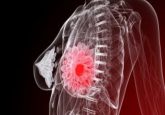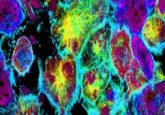Novel therapeutic target identified for cancer-related bone pain

A group of researchers from the Saint Louis University (MO, USA) have a discovered a key molecular pathway that drives cancer-related bone pain. From this study, published recently in the journal Pain, the team have also identified a novel mechanism to inhibit this type of pain.
Metastatic bone pain is the single most common form of cancer pain and persists as a result of peripheral and central inflammatory in addition to neuropathic mechanisms. Cancer-induced bone pain is reported by 30–50% of all cancer patients and by 75–90% of late-stage patients.
“Pain is a huge problem — for the patient, the caregiver, the family, the doctors,” lead author Daniela Salvemini from Saint Louis University commented. “We have limited options. So, I have a sense of urgency — I don’t want people to be in pain — and therefore I have made it my mission to discover drugs that can effectively abrogate pain.”
In this study, Saint Louis University researchers report the first characterization of sphingolipid metabolism alterations in the spinal cord occurring during cancer-induced bone pain.
The team observed an increase in the biosynthesis of the molecule termed sphingosine 1-phosphate (S1P), following femoral arthrotomy and syngenic tumor implantation in mice, suggesting that increases in S1P are a key component in developing pain.
The team then went on to demonstrate that S1P receptor subtype 1 (S1PR1) mitigates bone pain and neuroinflammation and that by inhibiting S1PR1 they were able to inhibit bone cancer pain. This identifies S1PR1 as a potential therapeutic target alone or as a secondary therapy to address cancer-induced bone pain.
“Thanks to an exceptional team that included the expertise of Dr. Todd Vanderah, known for his seminal work in pain, and Dr. Sarah Spiegel, known for her work in sphingolipid biology and the discovery of S1P, we were able to make this significant advance toward providing pain relief for those who are suffering,” Salvemini concluded.
Sources: Science daily press release; Grenald SA; Doyle TM; Zhang H et al Targeting the S1P/S1PR1 axis mitigates cancer-induced bone pain and neuroinflammation Pain doi: 10.1097/j.pain.0000000000000965 (2017).




